Howling in Place
During shelter-in-place, coyotes have been roaming the empty streets of the San Francisco Bay Area while some of its human residents have taken to howling.
For weeks now, many residents of Marin County, CA, where I live have been coming out on their decks at 8 pm and howling like our native coyotes. Quarantinees pause their Zoom calls and emerge from their dens, wine glass in hand, grateful their pajamaed kids gleefully abandon their video games and run outside to burn off their last burst of energy before bedtime. I eagerly drop whatever I’m doing to add to the echoing homage. Even my teenager jumps up to get in on the action.
In our neighborhood, it begins with a few scattered howls that quickly summon more until a high-pitched chorus rises above the shadowy hills. At this point, my cats run under the couch. Between the call and response of loud, close howls, a warbling harmony of wails from distant neighborhoods reverberates in the sky. As with real coyotes, you can’t tell from which direction the howls are coming. To hear this hypnotic refrain night after night is at once amusing, ominous, comforting, doleful and inspiring. It’s the five minutes of the day we’ve come to treasure.
Ostensibly, we’re howling to honor the essential workers putting their lives at risk. Mill Valley resident Hugh Kuhn promoted the idea on social media after hearing some kids howling one evening, and it just took off.
Lately I’m hearing a lot more howls – and more robust, realistic ones – so either my neighbors (and their dogs) are seriously getting into it now, or real coyotes are responding in kind. It may just be a flash in the pandemic that disappears when shelter-in-place lifts, but what if this custom is more than a thank-you, albeit well-deserved? I can’t shake the sense it must be serving an even deeper purpose, that the collective unconscious is slipping out at twilight for a moment with an urgent message. But what? And why?
Coyotes howl to find or call their pack. The purest explanation is we’re exchanging a symphony of howls with our fellow shut-ins simply to reassure us that we’re not alone: “I’m here.” “Me, too.”
Or it’s a time-out for a playful tension release. Coyote embodies the Trickster archetype, one of the oldest in indigenous American mythology, including Marin’s Coastal Miwok. A mischievous, supernatural, shape-shifting character wily in his deceit, the Trickster also foolishly creates misadventures for himself. When we take life too seriously, Coyote reminds us to embrace unpredictability and laugh at ourselves. It’s hard to howl with a straight face.
Then again, we might be channeling Coyote for more drastic support. Trickster Coyote likes to flout taboos, laws and social expectations so when people embody this archetype (or support a leader who does, by proxy), it provides a sort of catharsis from societal demands. But they can go too far – like empowering a toxic Trickster leader or defying social distancing too early – and become the fools who lose it all. Our howling offers us a compromise: rebel but shrewdly – embrace our primal, creative, pack nature without activating the hubris that never ends well.
Coyote is also known to be amoral, stubborn, conniving, cruel, two-faced and too curious for her own good and is often underestimated in the damage she can do. Remind you of anyone? We may activate this archetype to subconsciously process and combat the real-life Trickster characters we are most beset with right now: certain political leaders who shall not be named, protesters blocking hospitals or threatening state houses, even Coronavirus itself. Ironically, these Tricksters teach us essential lessons when they test our most sacrosanct beliefs, shake up our complacence or shatter our delusions.
A myth illuminates another possible motive for our howling: Coyote sees the Creator placing the stars in the sky in an orderly manner from a bag and asks if he can help. Creator says “sure, but keep it tidy”. Coyote, being a coyote, gets impatient and throws the whole bag up dispersing the stars haphazardly in the heavens. Creator scolds him for his carelessness; now Coyote howls every night when he sees the mess he made. This reminds me that, tragically, humans unleashed this pandemic; we haven’t shown nearly the respect for our planet to sustain life here. Ever notice, no creature ever howls downward towards Earth? It’s always straight up to the sky, as if pleading for redemption. Perhaps our nightly baying is subconscious lamentation of the mess we’ve made.
Coyote, like ourselves, has both positive and negative qualities that are especially instructive right now. One of the world’s most adaptable creatures, Coyote takes advantage of opportunities to explore and expand her territory – one once swam to an island off Massachusetts and another was captured in New York’s Central Park in 1999. Though we can’t travel right now, we must become more adaptable and resilient than ever before. Perhaps our yearning for freedom draws us to the spirit of hardy adventurers like Coyote. However, this time is our opportunity to explore and expand our inner territory – that of self-awareness, self-regulation, collaboration, innovation and reinvention – so we can emerge from this crisis having transformed ourselves and our world to cohabitate with this virus and all the vulnerabilities and trauma left bare in its wake.
As with the stars fiasco, Trickster Coyote forces change; if it’s positive, it’s usually by accident. Many people speak now of feeling paralyzed by the uncertainty of the future. Coyote’s antihero lesson here might be: rather than waiting for some silver lining, let’s galvanize our own personal and collective agency and proactively and intentionally create our new paradigm together.
Indeed, when something awful transpires that then generates healing or learning, some shamans call it coyote medicine. Maybe we’re all howling from that primal place inside us that yearns to transcend our shared darkness and finally create a culture that actually sustains the needs of humanity and the Earth’s ecosystem. One can hope — and howl.
Coyote Recording
Art of Elaine Thompson
Elaine was raised in a very creative home on the eastern end of Long Island. Days were spent building birdhouses with Dad, coloring at the kitchen table with her two sisters, or making cardboard castles with Mom. She fell in love with the simple pleasures of creating,later developing her skills in high school and refining them in college. She graduated in December of 2007 from the State University of New York at New Paltz with a Bachelor of Fine Arts in Painting and Drawing.
Elaine works mainly in oil paint and graphite pencil and is inspired by her love of all living things (especially the furry four-legged ones) and the delight of a good giggle. Painting allows Elaine to remain connected to her inner child and hopes that her work will encourage others to do the same. Elaine is currently living in Ellenville, NY, and shows her work at art fairs and festivals around the North East. Visit her website at elainethompsonart.com.



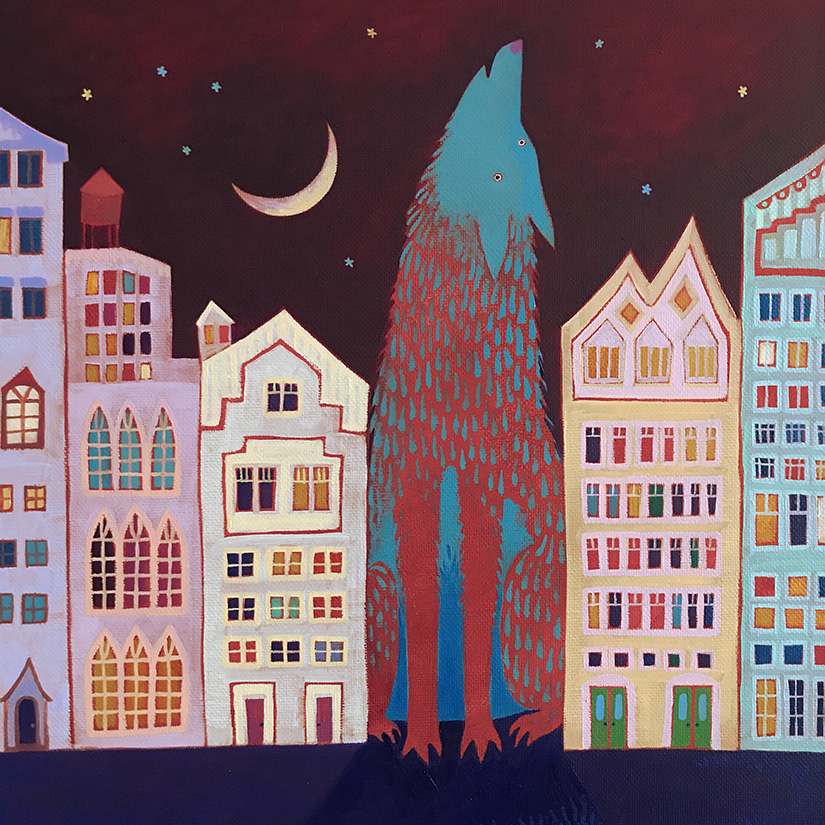
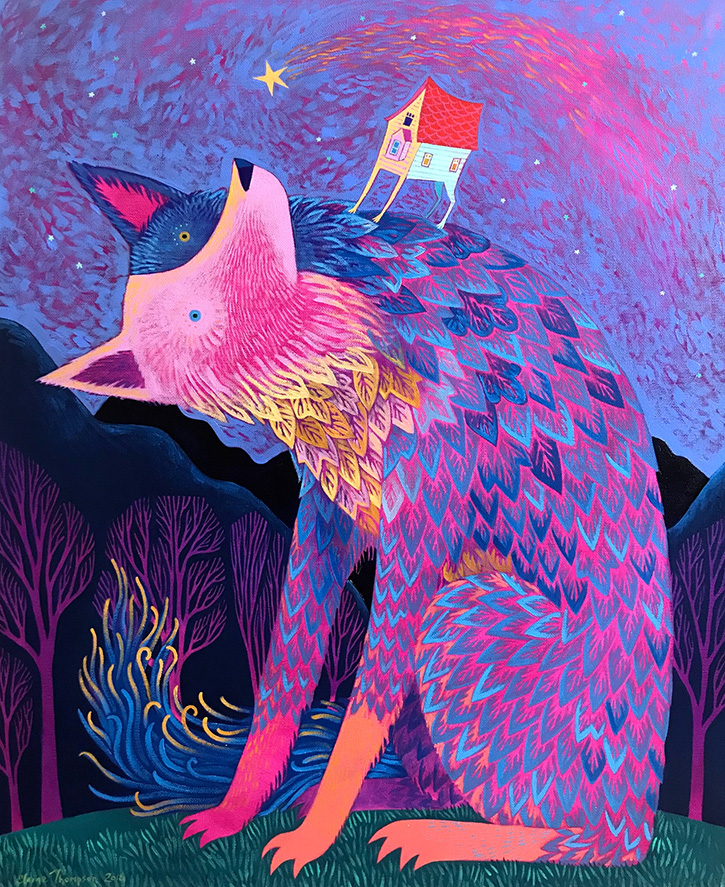
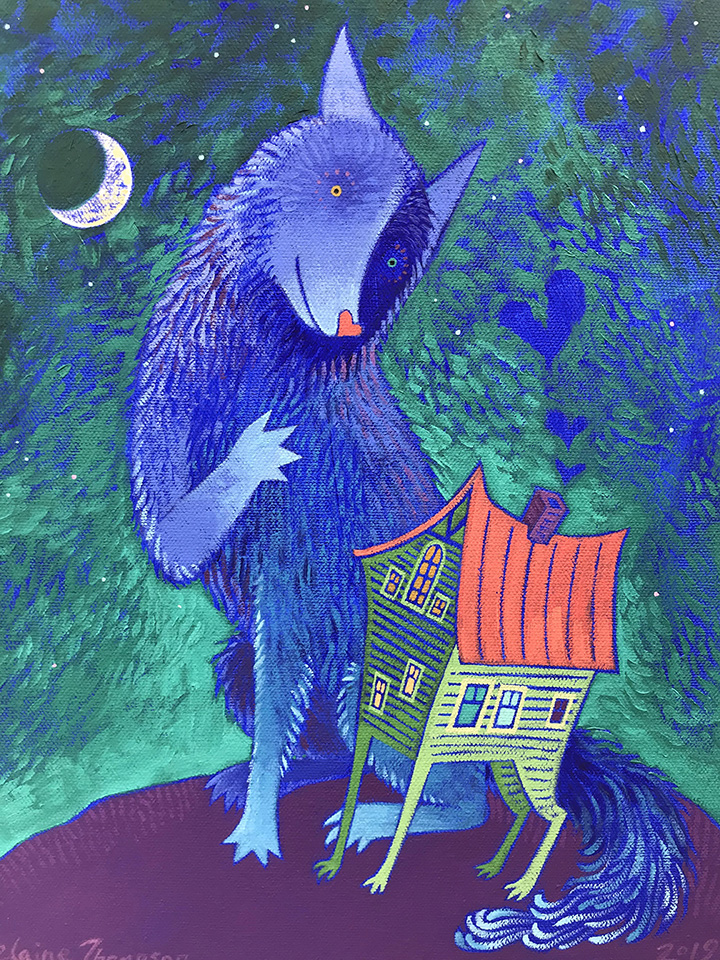
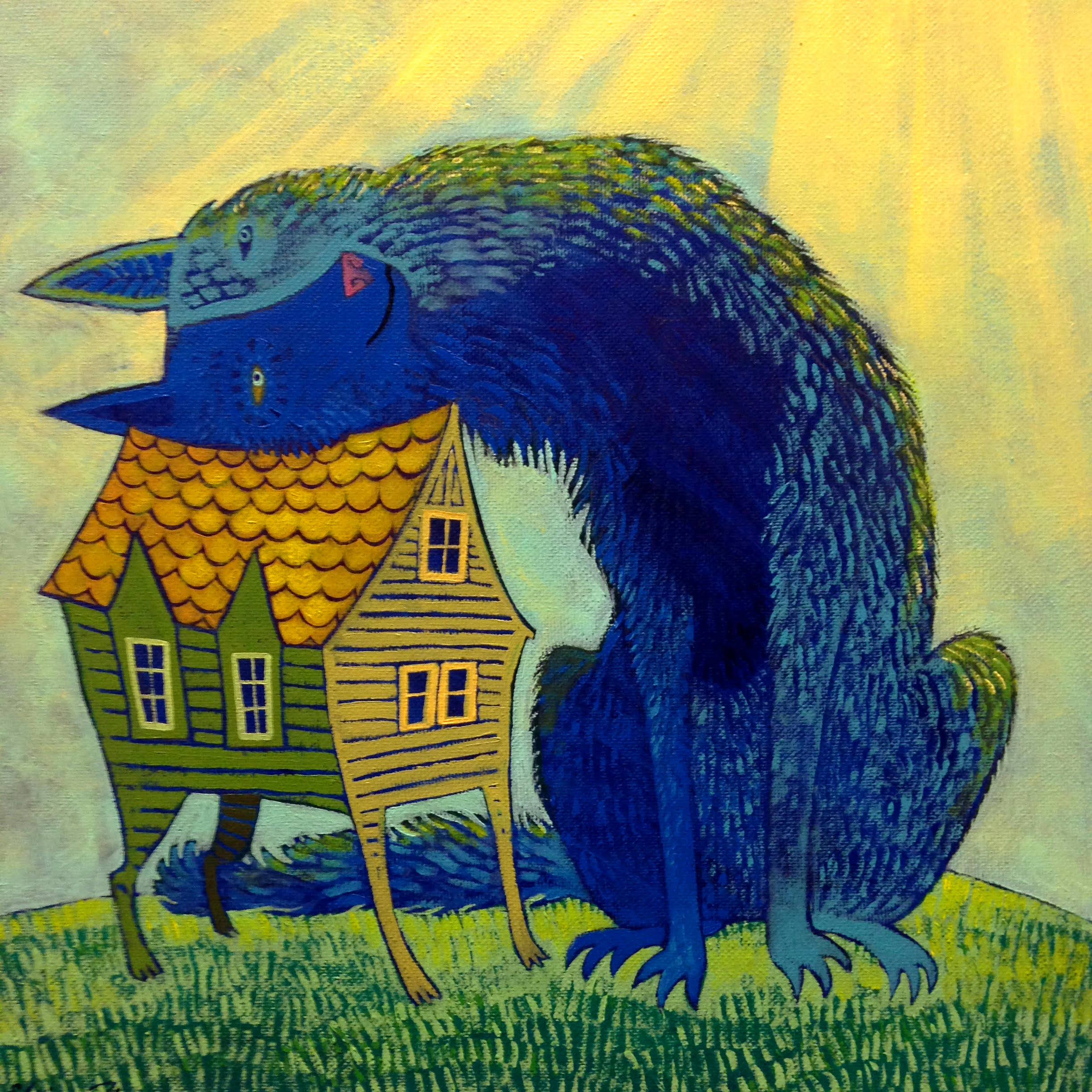
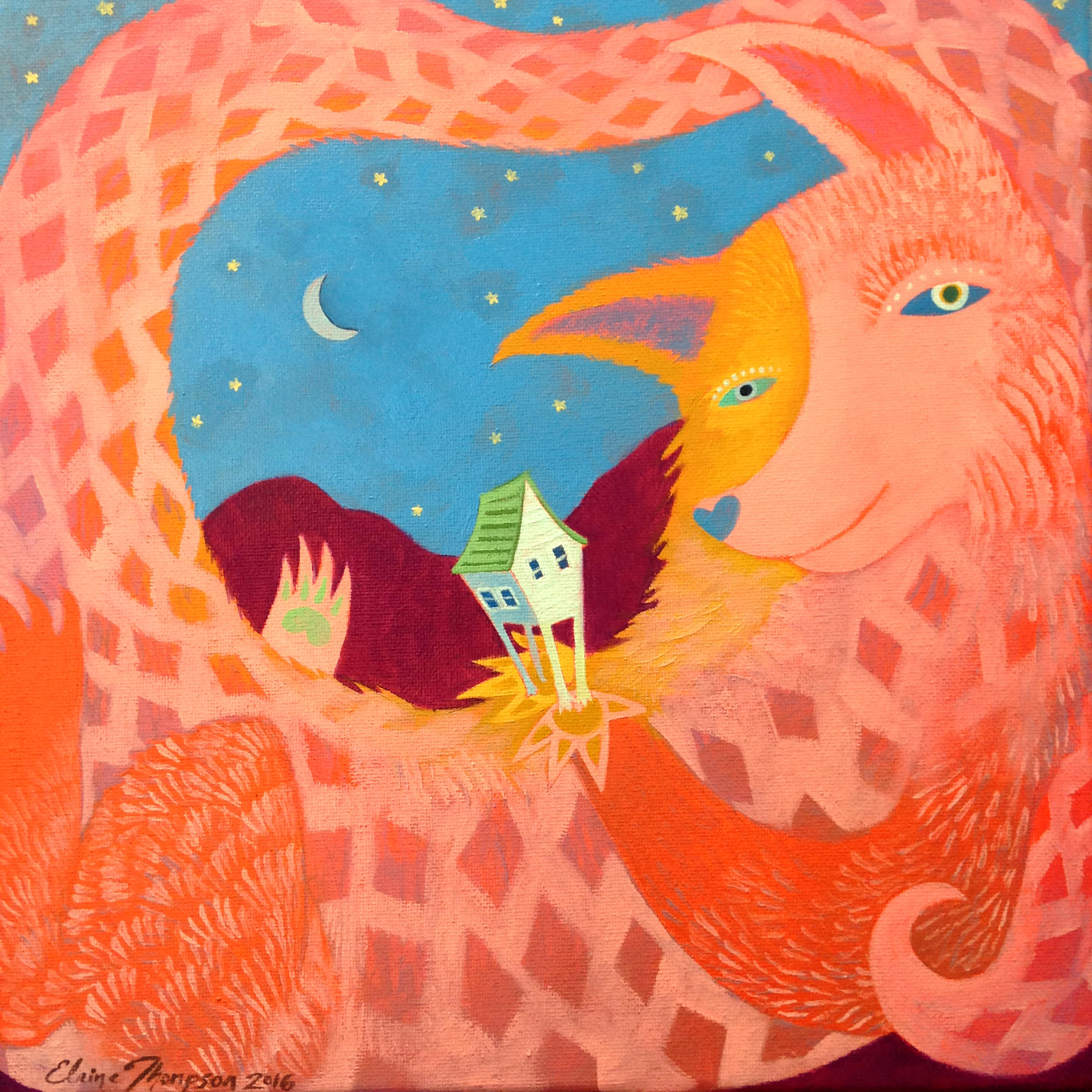
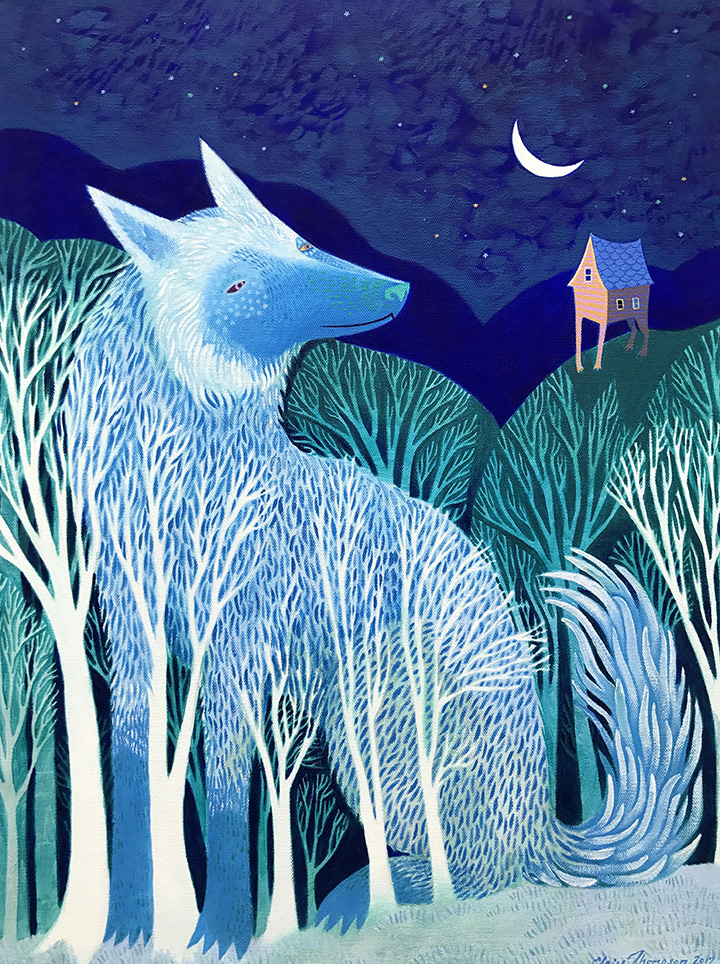
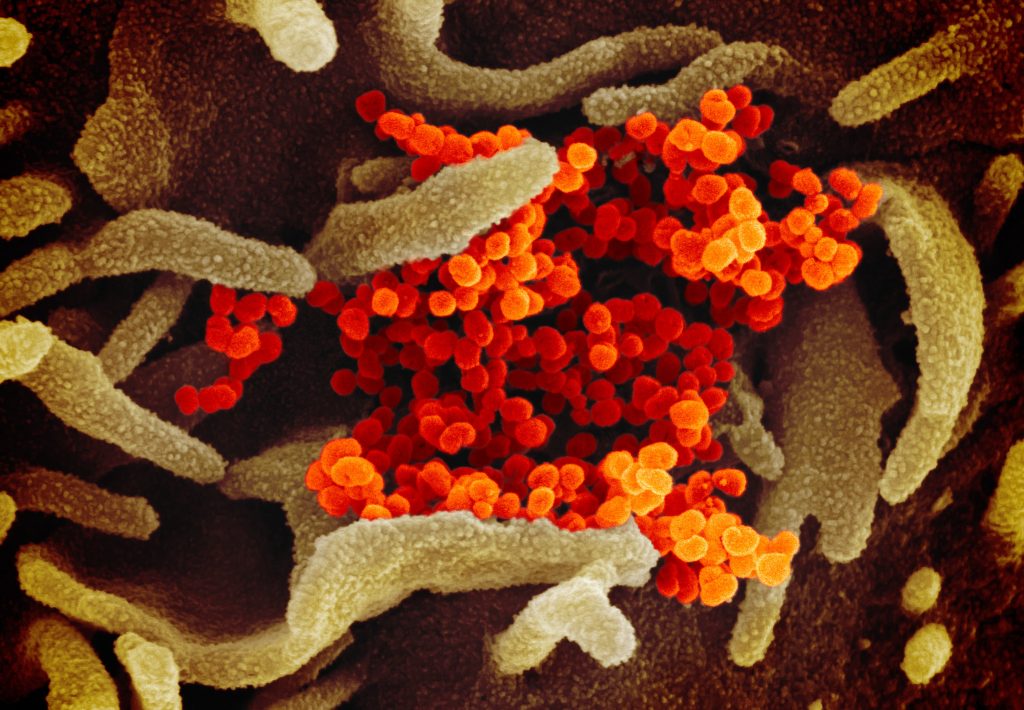
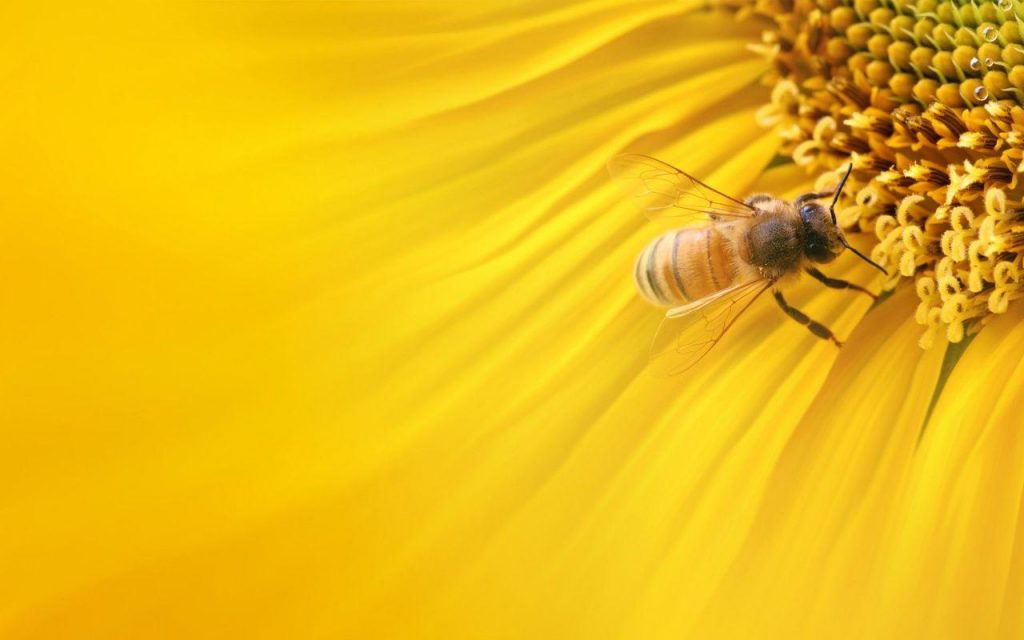
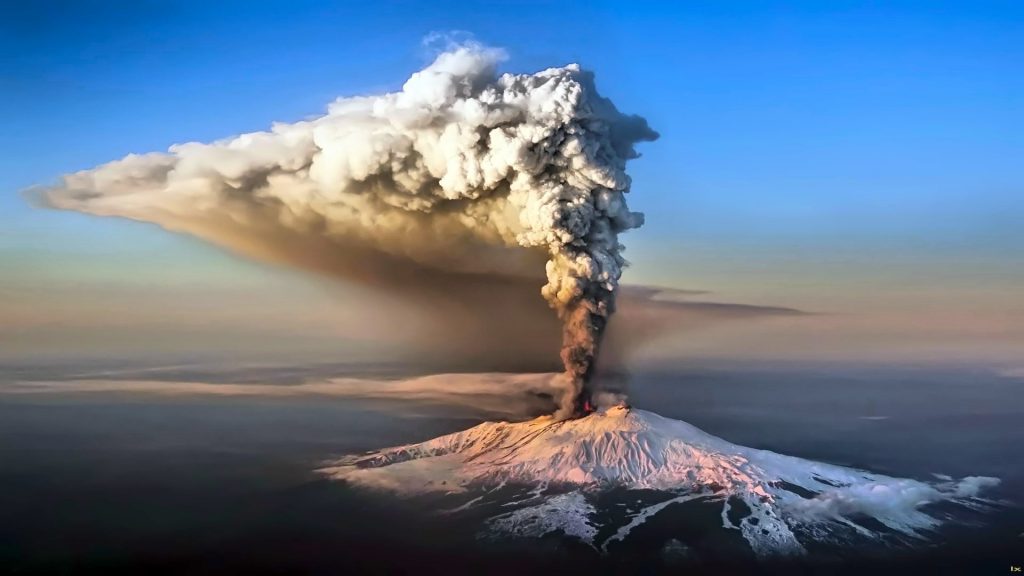
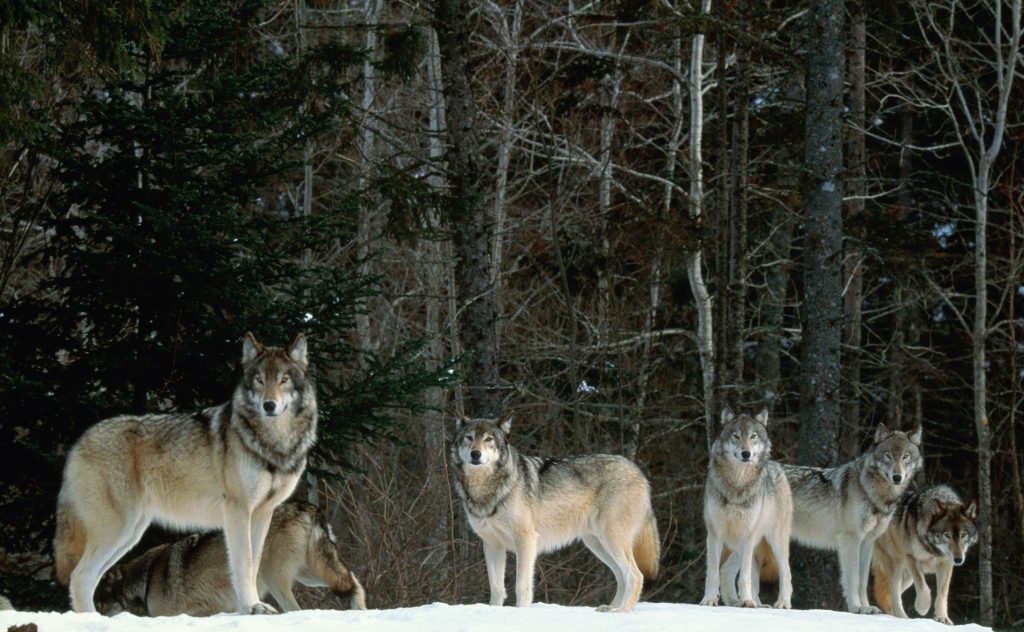
Hi Amy, nice article. We must be neighbors and may have howled together. If this link is allowed, here is a piece of mine Dark Mountain recently published with a Marin howling hook. Take care. Tom
https://dark-mountain.net/howling-at-the-edge/